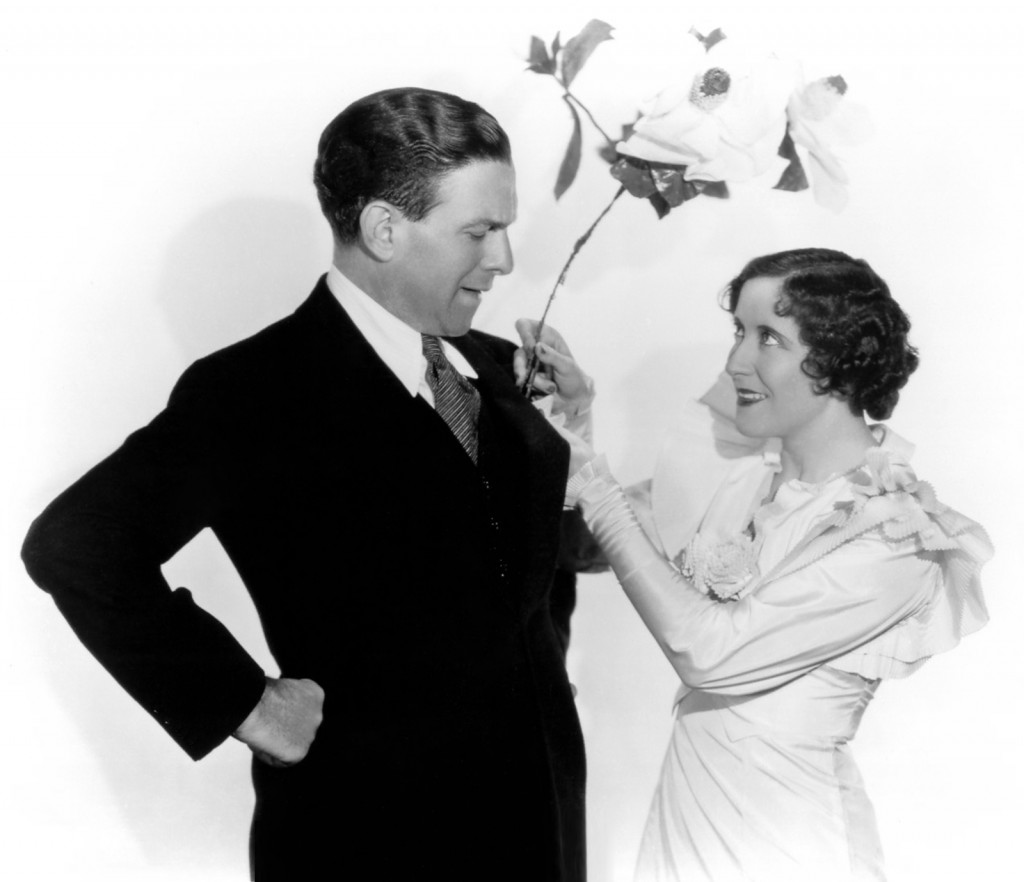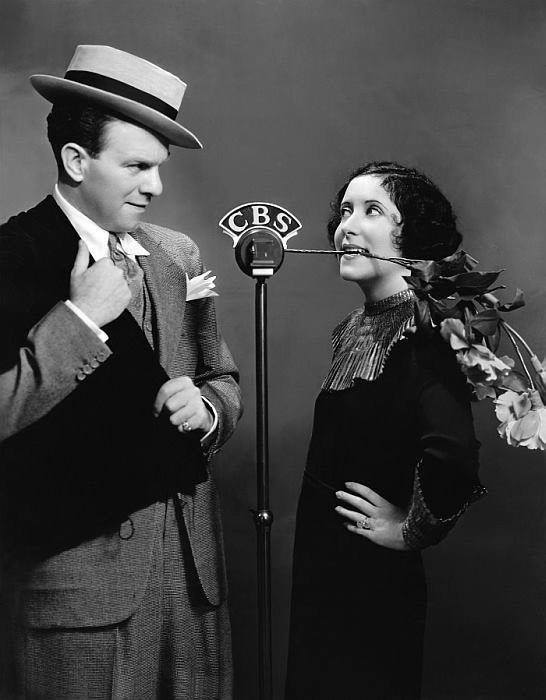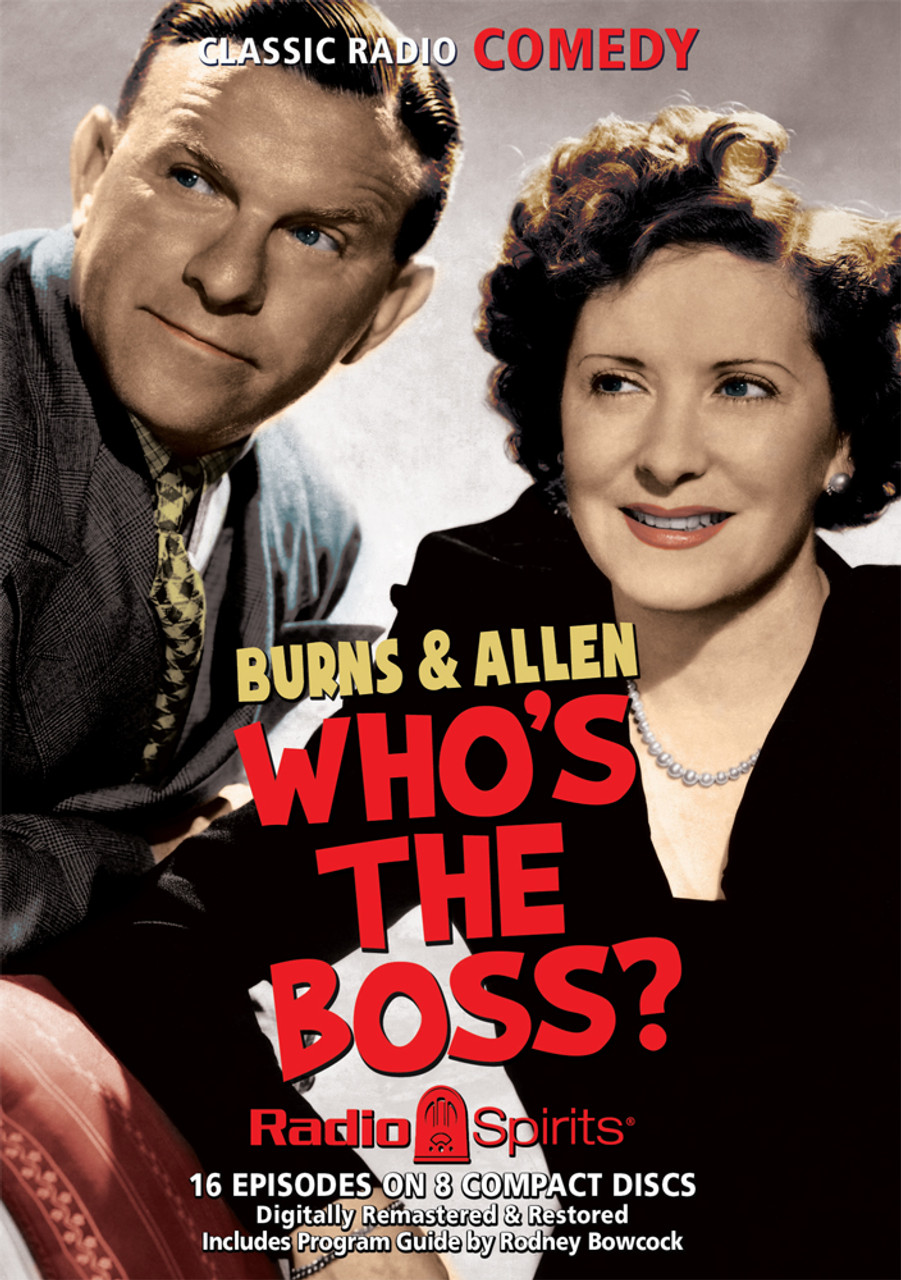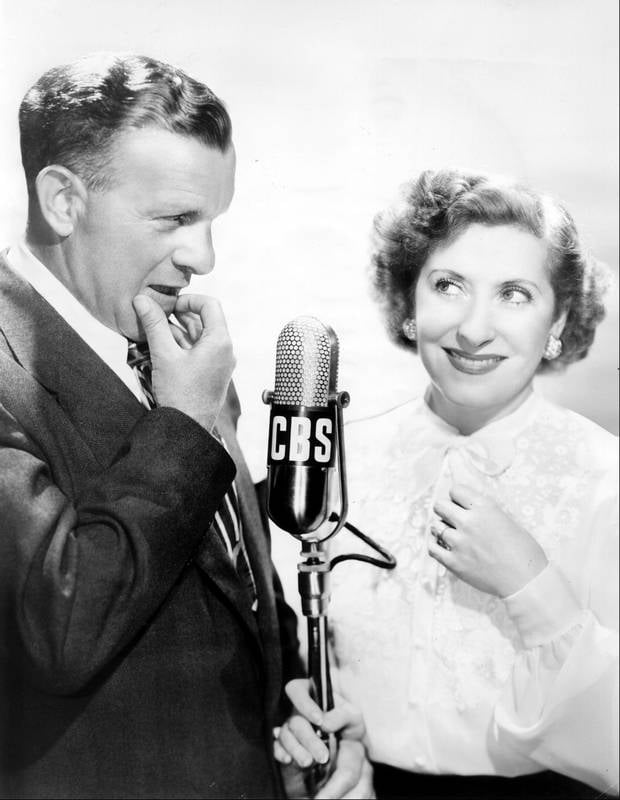Happy Anniversary, George & Gracie!
Posted by Ivan G. Shreve, Jr. on Jan 7th 2023
By 1922, entertainer George Burns was a vaudeville “veteran.” He knew enough about show business to understand what would work in a stage act and what wouldn’t, although his own career was distinguished not so much by success but by steadfast determination to his craft. Before teaming up with partner Billy Lorraine for an act of snappy and syncopated patter, he had been a vocalist, a dancer (George’s first wife, whom he divorced after 26 weeks, was his partner), and even a seal trainer.
This all changed when Burns met Gracie Allen just as Lorraine had announced his
intention to dissolve their partnership. George suggested to Gracie that they
team up, and initially it looked as if it was going to be another example of
Burns soldiering on in vaudeville despite a failure to catch on. You see,
George decided to style the act so that Gracie would provide the straight lines
and George the punchlines. When audiences laughed louder at Gracie’s straight
delivery than George’s boffo jokes, Burns immediately realized that something
had to be done. He switched his and Gracie’s roles in the act, and it went over
so well that George decided to marry Gracie on this date in 1926…to ensure job
security, one can only guess.
Nathan Birnbaum was born in New York City on January 20, 1896 and from a very
early age knew he wanted a career in show business. You see, seven-year-old
“Nattie” worked in a candy shop and to pass the time, he and several of his
fellow employees would harmonize in song in the basement. When passersby
happened to hear “The Pee-Wee Quartet” do their thing (thanks to a local postal
carrier) and threw pennies at the youngsters in appreciation, Birnbaum knew his
chocolate syrup-making days were over and show business was his future. The
Quartet sang anywhere they could: on street corners, on ferryboats, and even the
occasional saloon and brothel. “We'd put our hats down for donations,” Burns
reminisced in 2007. “Sometimes the customers threw something in the hats.
Sometimes they took something out of the hats. Sometimes they took the hats.”

In addition to singing with The Pee-Wee Quartet, George Burns (his new
professional name, chosen to downplay his Jewish heritage) got work operating
the curtains at a vaudeville and nickelodeon theatre. Burns was drafted in 1917
but was rejected due to his extreme nearsightedness. For most of his vaudeville
career, George worked as an adagio dancer even though he most assuredly
demonstrated a flair for writing and performing comedy. He would get an
opportunity to display these talents upon meeting his future wife.
Grace Ethel Cecile Rosalie Allen was born in San Francisco, California on July
26, 1895. Gracie also set her sights on show business at an early age; her
father Edward was a song-and-dance man in vaudeville, and she joined his act at
the age of three. At fourteen, Gracie was wowing them on West Coast stages in a
successful act with her sisters, then later struck out on her own landing roles
in stage shows due to her ability to do an Irish dialect in addition to her
terpsichorean talents. She was a dancer in a troupe billed as “Larry Reilly and
Company” for several years before leaving after a dispute over billing. Allen
was seriously considering quitting show business and enrolling in secretarial
school when she was persuaded to attend a vaudeville show in New Jersey to
watch one of her roommates perform. It was there that she met George, who
coaxed her into teaming up with him. Their first engagement was in Newark’s
Hill Street theatre in 1923, and as previously noted, George made the decision
to become the act’s straight man after his jokes produced a lot of hen fruit.
“I knew right away that there was a feeling of something between the audience
and Gracie,” he recalled in later years. “They loved her, and so, not being a
fool and wanting to smoke cigars for the rest of my life, I gave her the
jokes.”
It wasn’t long before George Burns started to look at wife Gracie Allen beyond
their simple vaudeville partnership. George had seriously fallen for Gracie,
and he competed for her affections with a formidable rival, her boyfriend Benny
Ryan (a songwriter and dancer). Burns quickly outpaced Ryan for Gracie’s
attention due to an emergency appendectomy Gracie was forced to forego in a San
Francisco hospital in 1925. George sent his future wife enough flowers to fill
her entire hospital room. At Christmas time that year, George gave Gracie an
ultimatum: she had ten days to decide as to whether or not she would marry him.
She said “yes” on the ninth day, and the duo were married on January 7, 1926.

Not long after the couple became Mr. and Mrs. George Burns, George and Gracie
graduated to the ranks of vaudeville’s top headliners due to their successful
“illogical logic” act. On stage, Gracie played a daffy screwball who sincerely
believed the often ludicrous statements she uttered were completely true. “It
makes sense but it only made sense to Gracie,” George affirmed. They would
eventually achieve every vaudevillian’s dream: playing the Palace Theatre in
New York (which they did in 1931). But George shrewdly realized that vaudeville
was not long for this world and surmised that they would have to find other entertainment
fields to conquer: namely, the burgeoning medium known as radio. While Burns
and Allen were touring London in 1929, they were invited to appear on the BBC
and were well-received as a result. Gracie was then asked to appear with Eddie
Cantor on his popular Chase & Sanborn Hour in 1931
(George was a little put out at first because Cantor nudged him aside as
straight man) and the following year, the team began to be regularly featured
on The
Robert Burns Panatela Program (ideal for George, who had been smoking
cigars since he was 14) along with Guy Lombardo and His Royal Canadians.
Burns and Allen would get their own program in the fall of 1934 (known as The
Adventures of Gracie) for White Owl cigars and later Campbell Soups,
then switched sponsors in April of 1937 for a year for Grape Nuts. From 1938 to
1939, the duo broadcast for Chesterfield Cigarettes, Hinds Cream from 1939 to
1940, and Hormel Meats from 1940 to 1941. George and Gracie began their
association with Swan Soap in the fall of 1941 and then an equally lucrative
stint with Maxwell House from 1945 to 1949. In their last season on radio, the
team had their weekly bills paid by Block Drugs (Amm-i-dent toothpaste).
Though George Burns and Gracie Allen later achieved success in motion pictures
(with a series of one-reel comedies for Paramount and feature films like Six
of a Kind [1934] and A Damsel in Distress [1937]), it was radio
where the husband-and-wife team really hit their stride. They later crossed
over to the small screen with The George Burns & Gracie Allen Show,
which ran from 1950 to 1958 until Gracie’s decision to retire. Gracie Allen
would leave this world for a better one in 1964 at the age of 69; husband
George would hit the centennial mark before his passing in 1996.

To celebrate George Burns & Gracie Allen’s wedding anniversary, Radio
Spirits invites you to check out our latest CD collection featuring the famous
radio comedy double act: Who’s the Boss? We’ve got plenty of George & Gracie on Burns & Allen and Friends, Gracie for President, Illogical Logic, Love and War, and Nonsense.
In addition, you’ll hear our anniversary couple on the sets Great Radio Christmas, Great Radio Comedy, Great Radio Sitcoms, Jack Benny & Friends, and Jack Benny: Be Our Guest.
In our digital downloads store, there’s additional George & Gracie on As Good as Nuts, Beverly Hills Uplift Society, Home Fires, Keep Smiling, Muddling Through, and Treasury.
You’ll find solo George as Jack Benny’s guest on Jack Benny: Maestro, and the couple are back together on the Yuletide
compendiums Christmas Radio Classics, Radio Christmas Spirits, and The Voices of Christmas Past. Happy anniversary to the people who live in the
Burns house!

